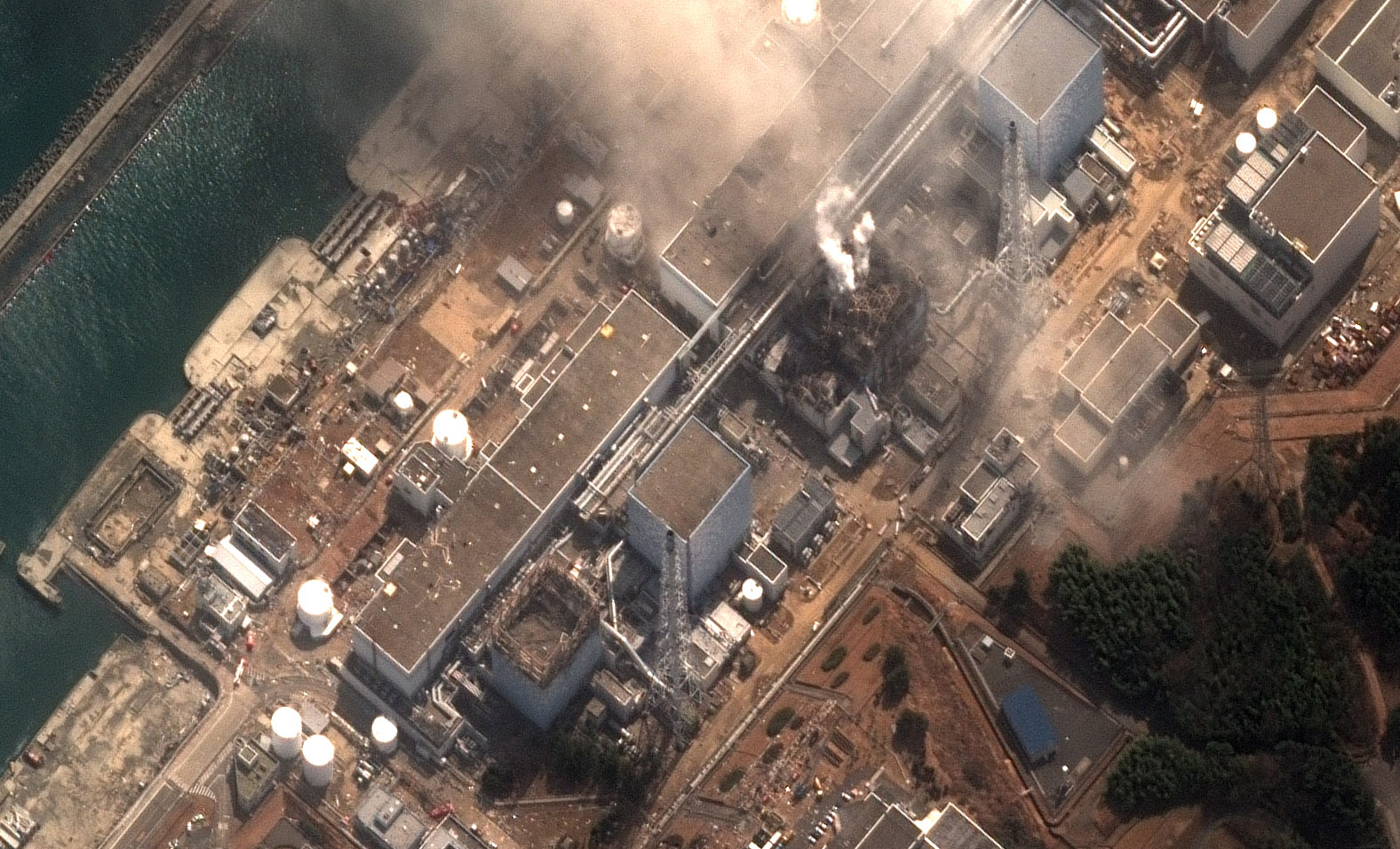Ryan McGinnis
EF5
They vent from the reactor itself; that's how the cooling works. The water directly cools the rods. Normally, this water is converted to steam, which runs through pipes to turn turbines and is then condensed and re-injected into the core.
What's been happening is that the water has been boiling and the steam pressure from inside the *reactor* has been directly released into the containment building (which blew itself up). This is why the water level drops; if you don't replace the water that boils away, soon there is no water left. All the pumps that replace the water are down and there is only one lone low-pressure firetruck left to replenish the water in all three reactors.
Normally the release of radioactive steam from inside the reactor wouldn't be a huge deal, since the radioactive steam release turns back into normal steam within seconds. The problem starts once the fuel rods become damaged, as at that point actual fission products are introduced into the steam, which are dumped into the containment building (which blew itself up) which are then introduced into the atmosphere. This is why the U.S.S. Ronald Reagan encountered a radiation level around 750 times normal background level 100 miles from the plant out to sea. An unknown quantity of of really bad long-halflife fission products are being dumped into the atmosphere.
The reason this is still better than the alternative is that if they don't dump the steam, the reactor eventually violently explodes and burns (a 'la Chernobyl). They're choosing to release small quantities of really really bad fission by-products into the atmosphere to avoid having the reactor decide to vomit the entire core into the sky. It's still a really, really big deal and I hope the radiation levels around the plant are nowhere near what they are 100 miles out to sea, since I don't think anyone is going to live in an area that is experiencing 200 REM of radiation per year.

What's been happening is that the water has been boiling and the steam pressure from inside the *reactor* has been directly released into the containment building (which blew itself up). This is why the water level drops; if you don't replace the water that boils away, soon there is no water left. All the pumps that replace the water are down and there is only one lone low-pressure firetruck left to replenish the water in all three reactors.
Normally the release of radioactive steam from inside the reactor wouldn't be a huge deal, since the radioactive steam release turns back into normal steam within seconds. The problem starts once the fuel rods become damaged, as at that point actual fission products are introduced into the steam, which are dumped into the containment building (which blew itself up) which are then introduced into the atmosphere. This is why the U.S.S. Ronald Reagan encountered a radiation level around 750 times normal background level 100 miles from the plant out to sea. An unknown quantity of of really bad long-halflife fission products are being dumped into the atmosphere.
The reason this is still better than the alternative is that if they don't dump the steam, the reactor eventually violently explodes and burns (a 'la Chernobyl). They're choosing to release small quantities of really really bad fission by-products into the atmosphere to avoid having the reactor decide to vomit the entire core into the sky. It's still a really, really big deal and I hope the radiation levels around the plant are nowhere near what they are 100 miles out to sea, since I don't think anyone is going to live in an area that is experiencing 200 REM of radiation per year.

Last edited by a moderator:

